With Alaska Airlines’ recent acquisition of Hawaiian Airlines, many riddles need to be solved about how this merger will reshape air travel in Hawaii. For one, how will Alaska address Hawaii’s aging interisland fleet and reshape the future of travel between the islands?
In our interview with Hawaiian CEO Joe Sprague last week, he discussed the similarities between Hawaiian interisland flying and Alaska intrastate flying, to which they have been long committed.
Hawaiian Airlines has long relied on its fleet of Boeing 717s for interisland service. This highly reliable workhorse fleet, having well exceeded its original life expectancy, is approaching an average age of 25 years. In contrast, Alaska boasts the youngest fleet of all US airlines, averaging under 10 years. It includes the larger Boeing 737 MAX series, its legacy Boeing 737’s, and the smaller Embraer E175. Both the E175 and the MAX fleets could play fascinating roles in the future of Hawaii’s interisland flights.
The aging Hawaiian Airlines 717 and the need for change are becoming apparent.
These aircraft have been the powerhouse of interisland routes, handling the high-frequency, short-haul flights essential for Hawaii visitors and residents. However, they will continue to be more costly to maintain as they age, and they lack the modern amenities and fuel efficiency that newer jets offer. With Alaska’s acquisition of Hawaiian Airlines, there’s growing speculation about how and when they’ll phase out these older jets and what aircraft might step in to maintain and improve service.


Could Alaska’s E175 be the solution?
Alaska Airlines already operates a significant fleet of 86 Embraer 175 jets, with plans for more. They currently have orders and options for 21 additional E175 jets. The E175 is known for its operational efficiency and suitability for short-haul flights, making it one of the more attractive options for interisland service. Here’s why the E175 may be worth considering:
Flexibility and efficiency: The E175 is designed for high-frequency operations, with the ability to replicate the up to 12 cycles (flights) per day demanding schedules that Hawaiian’s B717s currently manage. This makes it well-suited to the unusual demands of interisland travel.
Fuel Efficiency, comfort, and modern amenities: As a younger and more fuel-efficient aircraft compared to the 717, the E175 would reduce operational costs while offering passengers a more current and comfortable travel experience. Another big plus for passengers is that the cabin is configured in a 2×2 seat layout, meaning there are no middle seats.
Alaska’s Horizon Air 76-seat E175 jets have 12 first-class seats, 12 premium seats, and 52 main cabin seats. Onboard amenities include free entertainment, including over 1,000 movies and TV shows. First-class customers have 110-volt power at each seat.


However, challenges exist. The E175 has a lower seating capacity (76 seats) than the 717’s 128 seats. This means Alaska might need to increase the number of daily flights or adjust schedules to accommodate current demand, which could be complicated by available gate space and infrastructure limitations at Hawaii airports. On the other hand, there may be another solution to the E175 size limitation.
A Role for the 737 MAX in Hawaii’s interisland future?
Alaska Airlines is investing heavily in its 737 MAX fleet. It may eventually have hundreds of these planes, and there is some case for at least minimal utilization of these jets on some interisland routes alongside the E175s. Here’s how the 737 MAX could fit into the interisland equation:
Greater capacity: The 737 MAX 9, for example, can carry up to 178 passengers and more cargo than the E175, making it a possible solution for the busiest interisland routes, especially those between Honolulu and Maui. These planes wouldn’t be used strictly for interisland and aren’t designed for routine short-haul, rapid fire flights.
Southwest exclusively uses its mainland based MAX fleet to fly interisland between mainland flights, which is not an ideal solution.
Operational synergy: The 737 MAX is core to Alaska’s existing fleet strategy, and using them further in Hawaii could simplify maintenance, training, and operational logistics.
Even Hawaiian Airlines has already shown that larger jets like its A321neo fleet can be used effectively for some interisland routes. This means Alaska’s 737 MAX could naturally step into this role, offering a mix of aircraft sizes rather than a more traditional one-size-fits-all approach, in order to better match variable demand across Hawaii’s interisland routes.
Challenges and considerations ahead.
Transitioning Hawaiian’s fleet from the 717’s will not be a simple process. There are financial, operational, logistical, and union considerations that need to be addressed:
Financial concerns: Alaska may choose to delay the acquisition of a new fleet following the $2 billion acquisition of Hawaiian Airlines. This significant investment means Alaska could be more cautious with immediate fleet changes, especially since they recently leveraged their frequent flyer program to secure funds for the Hawaiian deal. The timing of any fleet transition will need to balance financial prudence with the operational need to modernize.
Pilot scope clauses: Any introduction of E175s for interisland routes may face restrictions related to pilot union agreements, requiring negotiations to ensure compliance with existing pilot contracts. This could be a complex and potentially lengthy process, as scope clauses often protect pilots’ rights to operate certain aircraft on specific routes.
Infrastructure and Gate Space: Increasing the number of flights with smaller aircraft like the E175 could necessitate additional gate space, which is already limited at some airports in Hawaii. However, adding some 737 MAX 9 flights could help mitigate this issue by maintaining passenger capacity with fewer total flights, thereby reducing strain on gate availability.
The path forward: A dual approach?
The best solution for Alaska may involve a combination of E175s and 737 MAX aircraft. This dual approach offers flexibility, allowing Alaska to tailor aircraft size to the demands of each route. The E175 can serve most lower-demand routes or off-peak times, while the 737 MAX 9 can handle heavier, busier interisland flights, maintaining service levels and cargo capacity. This strategy would allow Alaska to optimize operations by using the MAX 9 for a limited number of interisland stops in a manner similar to, but less reliant than the way Southwest Airlines’ currently approaches interisland with its all 737 MAX fleet.
Alaska Airlines faces a significant challenge in revitalizing Hawaii interisland travel.
But it also presents a unique and fascinating opportunity. Should Alaska choose to leverage its significant commitment to the fleets of modern E175 and 737 MAX jets, it might offer a unique, efficient, comfortable, and reliable interisland travel experience. Whatever strategy they decide on, it will not only help facilitate the elimination of the aging 717 fleet but also set the stage for an entirely new era of interisland connectivity. The coming months will reveal more about how Alaska plans to tackle this critical aspect of Hawaii travel, but one thing is clear: change is on the horizon, and it could transform the way we island-hop in the future.
How do you think Alaska Airlines will re-imagine the Hawaiian Airlines interisland fleet?
Get Breaking Hawaii Travel News
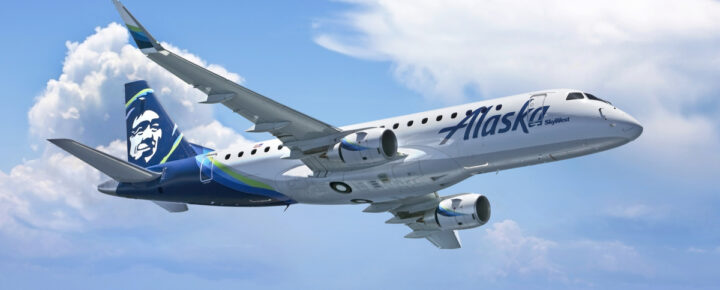
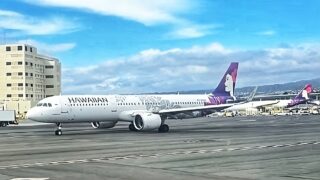

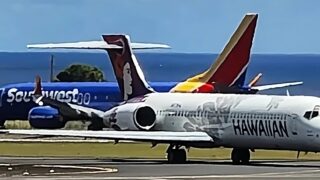
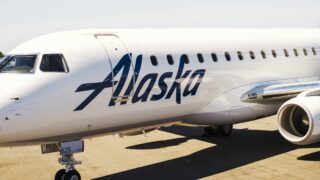
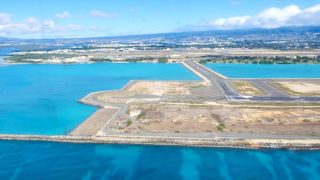
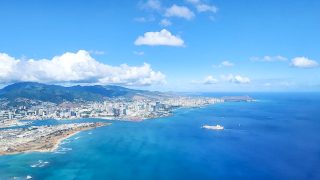
Given the uniqueness of Hawaiian interisland travel, I wonder if a “public charter operator” (the regulatory definition called Part 380) like JetSuiteX (a/k/a “JSX”) would be viable in Hawaii. The business concept of JSX is allowed to operate charter aircraft on a scheduled basis (as contradictory as that sounds). In effect, the charter operator looks like scheduled airline but flies smaller aircraft where it can sell individual seats. I could see a niche in Hawaii for such an operator. Google JSX and Part 380 operators for more information.
They’re now phased out by horizon but routes like KOA-LIH would be perfect use for the dash prop plane.
Alaska will definitely spend some afternoons running 737s interisland that came in midday and are turned overnight. Also morning flights interisland before the tourists want to go back. I wonder which airport is cheapest to park overnight?
Market them as one stop to the mainland.
Would be cool if they marketed and operated an island hopper too!
I think knowing how they operate in Alaska that they will do both and be very good at. In Alaska they have perfected their “Milk Runs” and offer several variations to serve the communities that are inaccessible by roads. They haul everything from mail to automobiles. They provide one stop and non stop service to LAX and HNL and the free Alaska 49 program gives two free bags to residents and reduced in state shipping costs. I see no reason for them to operate differently in Hawaii.
The turboprops are great, but they are loud and slower… horizon’s q-400s didn’t have first class seats. Turboprops may be more fuel efficient, but the slower speed and less capacity would be close to equivalent to a 717.
Speed of 717 is similar to 737, the 737 max doesn’t slow down quickly so has to slow down much earlier than a 717, 717s are often slowed down by ATC to accomodate 737s and other long range fuel efficient planes that have to slow early, 717s really the quickest Interisland, Q400 not close, would slow everyone else down for sequencing though. Q400 is 60% capacity of 717 passenger and similar cargo both in weight and space. Flies lower to get the turboprop efficient meaning it will be more in the weather and subject to more extended turbulence typically.
Wasn’t Hawaiian a partner in the Seaglider? What of that?
If there’s a hurricane and/or bad weather, they’d have to cancel every sea glider “flight”
Good job pointing out the E175 is not well suited to interisland with 58% of the seating capacity, and a similar reduction in cargo capacity they would need to secure more gates, fly even more flights, hire more people to support (also causing more airspace congestion and delays), something that is very unlikely, or just reduce the number of seats and cargo that go interisland, very much hurting locals. The closest aircraft that really fits the bill is the A220. SWA loses money with the MAX, the engines are designed to save fuel at altitude in cruise, not the constant up / down of interisland, the 321 Neo have done interisland but PW and Airbus recommended against for the airframe pressure cycles and the engines, this dilemma is an issue in the next 3-5 years when the 717 is unsupportable for parts. It is the ideal aircraft, however the parts supply is finite, and the 220 is expensive, not a Boeing to which Alaska seems wed, and is backed up in production. No easy solution here.
Giving the regional airlines to do inter island flying would be cheaper to operate, but how are the crews supposed to survive off of regional airline pay in Hawaii? Do you trust their non Hawaii flight experience, especially in Maui’s gusty winds? Embraer 175’s cargo compartment will be limited for surfboards (long and short). Also, giving away the inter island flying would mean more Hawaii jobs lost, especially the legacy Hawaiian Airlines crew. If we lose inter island flying to the regionals, we might as well forget that Hawaiian Airlines ever existed.
I think the DC9 – OoopS… B717’s may have quite a bit of service life post merge… They’re old but built like the B17’s of WW2…
Best Regards
Good luck fitting surfboards into the 175.
aloha guys, hope all is well over on Kauai.
Question. I am out of the loop on this. Are the Max planes now considered safe? after the crashes a while ago no one I know would fly on them. Has that all been addressed and ok to go?
Thanks
Ane T
Hi Ane.
We’re on one today so we certainly hope so.
Aloha.
As much as Alaska Air Group was trying to rid itself of Virgin America’s A320’s, it should consider the Airbus A220 for Neighbor Island routes which could also open up the door to ETOPS operations for flights to and from smaller airports on the West Coast – for example, HNL to Napa Valley or Sonoma Airports in Northern California or perhaps Fresno to Kona or Lihue.
What do you think of replacing the Boeing 717 with the Airbus A220 aircraft for interisland use? Though it seems Alaska is locked into the E175 and Boeing jets. But Hawaiian does operate Airbus aircraft on their long haul routes. Thoughts?
Mahalo for all your insights on the Hawaiian Islands.
A combination of E175 for off-peak and Max 9 for peak hour traffic might work well for interisland flying. Managing that mix will pose some challenges, but at least Alaska will be bringing far better tech to the table.
Far better tech? The 737, no widebodies? 737 Airframe based on the 1956 707 (even the DC-9 forefather of the 717 is a newer airframe design than the 707). They have internet, but not Starlink, all the Hawaiian 321 and 330 now have free Starlink as good as most home internet. Not sure which tech Alaska has, maybe reservation system, but Hawaiian just upgraded that as well. In seat entertainment? I don’t know, but Starlink reallly makes the in seat an afterthought. I have flown on Alaska, fine airline, did not notice anything tech heavy that was notable over Hawaiian. Hawaiian Flight Attendant’s get my vote by far. Starlink gets my vote by even more, best tech add to any airline for passengers in my view and I travel a lot on all the airlines. Maybe there is something tech heavy on Alaska I missed.
I’m referring to reservations, operations, planning systems. Hawaiian’s website and mobile app are a complete joke. They lack even the most basic functionality that every other airline offers. Being able to schedule aircraft and crews on multiple aircraft types will require systems far more robust than anything Hawaiian posesses.
Funny that Hawaiian invested in a new system last year for reservations and haven’t seen a lot of improvements there. As far as scheduling crews on multiple aircraft types, Alaska has one type, Hawaiian has 5 types so Alaska will definitely have to lean on Hawaiian’s experience there.